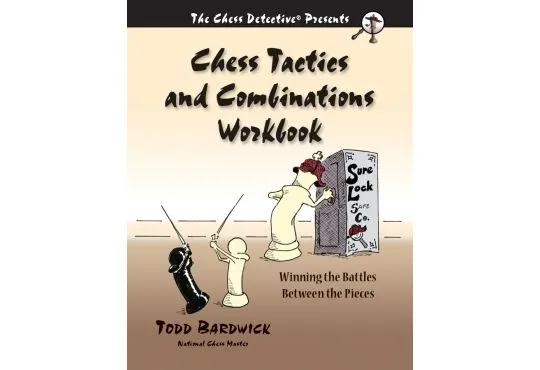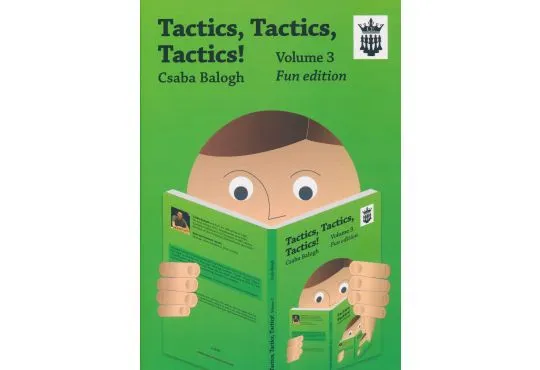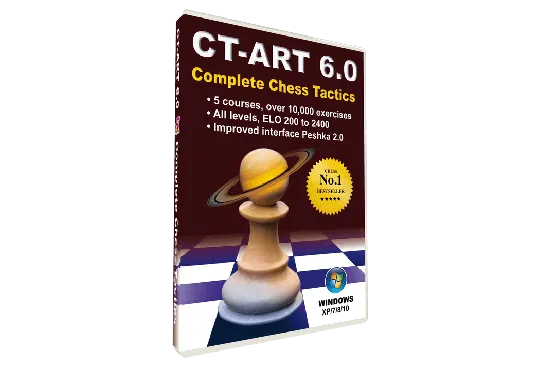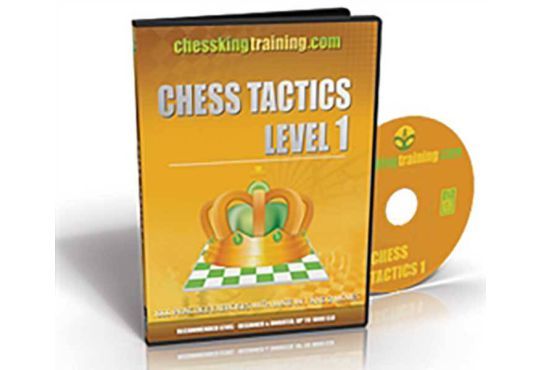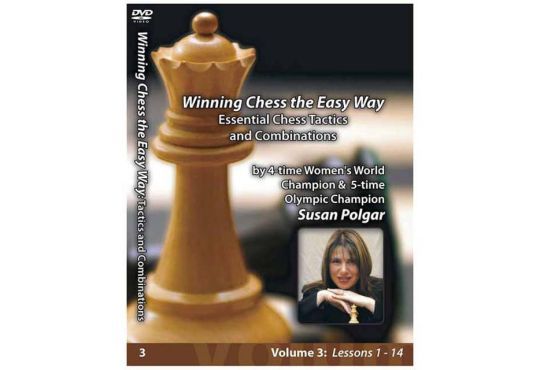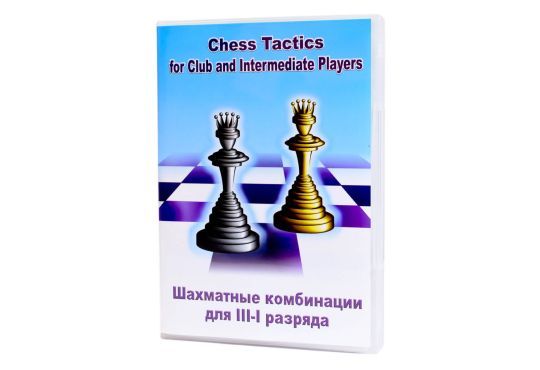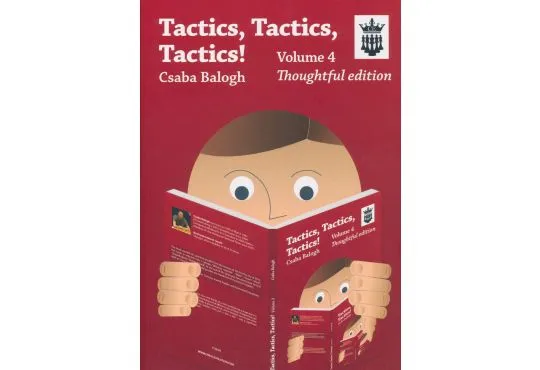Chess Tactics Every Beginner Should Know
Mastering basic chess tactics may be the fastest way to improve at chess. Learning forks, pins, and skewers for the first time is like gaining new superpowers on the chess board. Before we can master these basic tactics, we have to understand these new powers.

Table of contents
What is a Chess Tactic?
A chess tactic is not just any move or chess strategy that’s tricky or sets up a trap for your opponent. In his book, Learn to Play Chess Like a Boss, Grandmaster Patrick Wolff defines a chess tactic as, “a move or sequence of moves designed to achieve a goal.” Not only is this an excellent book to learn how to play chess, but it also nails the definition of a chess tactic.
How Chess Beginners Should Learn Tactics
Before we learn tactics, we need to understand chess basics. I make sure my students understand these basics before delving into the world of tactics:
How to Move a Piece:
Do you know how all the pieces move? It’s okay if you don’t! Just make sure before you start trying to learn a fork that you understand how the knight moves.
Check and Checkmate:
So many chess tactics revolve around the king. Our goal in chess is to win the game, so understanding checkmate and basic checkmating patterns is key.
Understanding Material and How to Win Material
Winning material is a goal of many chess tactics, so we must understand piece value and hanging pieces before learning chess tactics.
How Do You Find Chess Tactics?
There are so many moves that can be played, so how do we find these tactics? The key is pattern recognition. But before you can constantly recognize patterns in your chess matches, you need to learn them!
The Tactics Chess Beginners Should Know
Double Attack
Chess is all about efficiency. If I were to give you multiple moves in a row, you could easily win a game. Whether you reach a checkmate or just take some of your opponent's pieces, having many moves in a row would be a huge advantage. Well a double attack, also known as a fork, lets you do just that. A double attack is a basic tactic that allows you an extra tempo by attacking two things while your opponent can only save one.

Here the black knight can jump into d3, double-attacking both the white king, and the white rook.

Here black gains a tempo while the white king has to move out of the check, and can take the rook on the next move.
Find the forks in these next two positions, black to play.


You can actually fork with every piece on the chessboard, even the king!

In all of these positions, we can move a piece and attack two squares at once, winning material. First, with Qd4+, then f4+, and lastly, Kf7 wins material by double attacking with the king!
Just like any of the tactical motifs we will learn today, forks/double attacks can happen at any moment in a chess game, you always have to be on the lookout!
Here is a position more like a real game, can you find the attacking piece here for white?

Pin
The key to understanding the pin is understanding the rules of chess! You can never put your king in danger. That means if you have a piece pointed toward your opponent's king, they are not allowed to move that piece; it is pinned. So a pin is when a piece cannot move because of the valuable piece behind it.

Here, the black knight on c6 cannot move since that would put their black king in check. Therefore, the bishop on b5 is pinning the knight. This is called an absolute pin.
When the piece behind the pinned piece is not a king, but something else like a queen, rook, or undefended piece, it is called a relative pin. Be careful when you only have a relative pin, because if that piece can move away with a check or bigger threat, you may not be pinning at all!
Here is a position akin to something called “Legal’s Mate.”

After Ne5, if black takes the white queen, that is checkmate after Bxf7#.
-
Out of stock
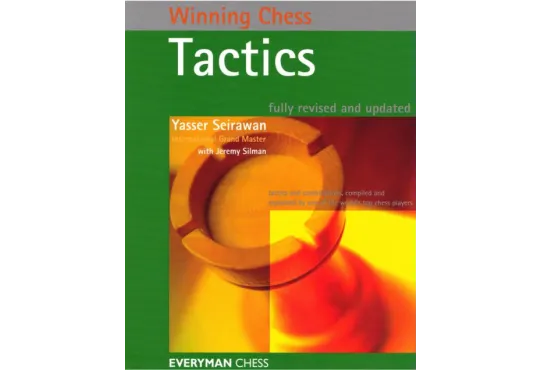 Winning Chess Tactics Tactics and Combinations, Compiled and Explained by One of the World's Top Chess Players$24.95
Winning Chess Tactics Tactics and Combinations, Compiled and Explained by One of the World's Top Chess Players$24.95
Using a Pin to Win Material in Your Chess Matches
Be aware anytime a piece is on the same file or diagonal as the king. That is the prime time for a pin! Look at the position below. Here, the rook and the king are on the same diagonal. Is there a way to pin the rook?

Bf6 wins material since the rook cannot move away, and the king cannot defend the rook.
Here is another example:

Once you notice that the king and queen are on the same file, rook over to g6 makes the most sense. Pin the queen to the king and win material.
Take Advantage of a Pin
Sometimes a pin is not just there to help you win material, but it can be a tool that enables a checkmate.
Here is an example where, because of the pin, we have a very strong attacking move.

Chess tactics help us achieve our goals, and checkmate is the ultimate goal! Thanks to our bishop pinning the pawn on g7, Rook to f6 is checkmate.
Skewer
What is a skewer, and how is it different from a pin? If a pin is when a piece cannot move because of the valuable piece behind it, a skewer is when a valuable piece is attacked and must move out of the way, allowing you to capture the lesser value piece.

Again, piece alignment is paramount. Noticing when you or your opponent have pieces on the same file or diagonal will help you find blunders for both sides.

Looking through all your checks is a good idea in any position, here it will help you find bishop to g5.
Discovered Attacks and Checks
Some of the most fun moves to play are discovered attacks. A discovered attack is when one piece moves, and an attack opens up because of that movement. Look at this example:

With the pawn moving forward, an attack on the queen is revealed! A discovered attack is often another kind of double attack. One kind of discovered attack is a discovered check.
-
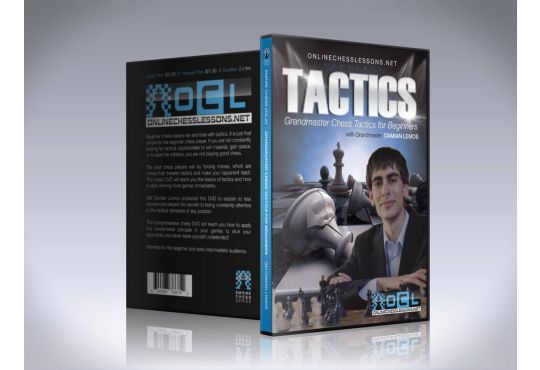 CLEARANCE - Chess Tactics of the Grandmasters - EMPIRE CHESSSpecial Price $11.18 Regular Price $27.95
CLEARANCE - Chess Tactics of the Grandmasters - EMPIRE CHESSSpecial Price $11.18 Regular Price $27.95
A discovered check is when you move a piece out of the way, and the attack revealed is on the king! The piece you are moving may or may not be delivering a check, but the piece behind the piece you are moving delivers a check. Here black could play their knight to d8 and attack the rook, but also gives a check with the bishop behind the knight.

Discovered checks can be deadly!

Double check
The answer to the last position was Rd1#, a double-check checkmate!
A double check is one of the most forcing moves in chess, and a double check is almost always from a discovered attack. Here is a tip for faster calculating, if you play a double check the king must move.
Removing the Guard
This is one of my favorite beginner chess tactics. Removing the guard is both very satisfying and incredibly useful. I also love this tactic because it is exactly what it sounds like You want to capture one piece or play a certain move, but the square is guarded. So what do you do? Remove the guard!

The bishop on d4 is only defended here by the knight on f3. So black can remove the defender with Bxf3, and after the queen recaptures, we can take the hanging bishop on d4.
If you have a full understanding of how to count attackers and defenders, then you will understand the power of removing one of those defenders!
Here is one of my favorite examples of removing the guard. This tactical motif can come from a few openings but this one arrives out of the Alapin variation of the Sicilian Defense.
In the position below, black uses their queen to grab a pawn on d4, expecting to trade queens and be up a pawn. What did they miss?

White can remove the guard! After Bxc6+, black will often opt for resignation.
X-ray
The last tactic we will look really does come out of a Superman comic book, the X-ray! An X-ray is when a piece attacks a square through another piece.

Here not only does the black rook attack the white rook in the corner, but so does the black queen. It looks through the white queen, adding another attacker to the rook. After Rxa1+, if white plays Qxa1, black can play Qxa1+ winning the queen. Otherwise black just wins the rook because of the X-ray!
See if you can find the X-ray attack here in this position.

Checkmate here is unavoidable for white after black plays Qxd8+, white responds with Rxd8, and black finishes the game with Rxd8#.
Different Ways You Can Use Chess Tactics
Now that you have learned these new powers on the chessboard, it’s important to understand how they can be used.
Checkmate
The most obvious goal of a chess tactic is checkmate, but that doesn’t always stop us from getting distracted and missing the forest for the hanging queen trees. Always be on the lookout for that ultimate goal, even if you think you are just going for material.
Win material
That being said, winning material is still an excellent result of a nice tactic. It is a skill of its own to convert that advantage to a win, but that comes with more practice.
Simplify
If you have a big material advantage or can reach a winning endgame, then one way to use a tactic is to simplify the position. Here if white can simplify and trade queens, they will have a winning advantage due to their two pawns. So white has a tactic here to do just that! What is the move and what is the name of this tactic?

Help You Build a Plan and Chess Strategy
Knowing tactics does not necessarily give you a full understanding of chess strategies and plans, but they can help you generate short-term plans if you are unsure how to proceed.
If you practice those basic chess tactics, and keep playing games, these new superpowers will have your chess soaring to new heights in no time!
Frequently Asked Questions
Reviewing this post, using online resources, or looking into some other great beginner books will help!
I would recommend having a strong understanding of how the pieces move, check and checkmate, and the value of material before you spend too much time on tactics.
An absolute pin is when a piece absolutely cannot move thanks to the king being behind it. A relative pin means the piece is only relatively pinned because the piece can technically still move.
These tactics are very similar! But with a pin, the more valuable piece is behind the piece you are attacking, and with a skewer the more valuable piece is what you are attacking.
Tactics in chess are about pattern recognition, and that just takes practice. There are some good free puzzle sources out there you can use!


